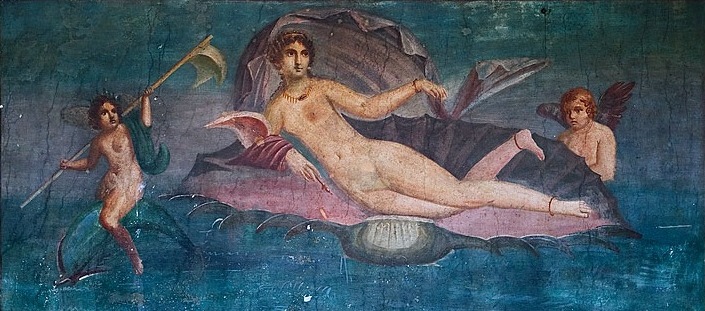Tuesday, December 14th, 2010
The "Sumptuous" Arts in Greece
The quarter is over. Over the past few days I’ve reflected on what lectures I enjoyed teaching to my ancient art students. I think that my favorite lecture was based on Kenneth Lapatin’s essay, “The Fate of Plate and Other Precious Metals: Toward a Historiography of Ancient Greek Minor (?) Arts”1.
The reason why Lapatin includes a question mark after the word “minor” is important: his whole essay revolves around the argument that the Greeks valued the so-called “minor arts” much more than they are valued today. For Lapatin, the “sumptuous” artistic materials like ivory, gold, silver and gemstone were the artistic mediums that the Greeks most prized. In other words, the Greek marble, bronze and (painted) pottery (all of which are placed at the heart of Western art history) weren’t as valued by the ancient Greeks.
To prove his point, Lapatin gives one especially interesting example. He writes that “in the middle of the sixth century BC, the inhabitants of Phocaea decided to abandon their city rather than submit to the Medes. Herodotus reports, ‘They loaded onto their ships their children, women, and household property, and above all the images of the gods from the sanctuaries and other dedications, everything, in fact, except bronzes, stoneworks, and paintings, and they sailed to Chios.'”2 Now I realize that there may have been some practical reasons why the Greeks didn’t load their ships with stonework (it is heavy, after all!), but isn’t it interesting that the art we value today is precisely the art that the Greeks chose to abandon?
In some ways, this news shouldn’t come as a surprise to art historians. We have known for a long time that the main purpose of the Parthenon was to house Phidias’ chryselephantine cult statue of Athena (see above left for a reconstruction of an original of c. 438 BC). The cult statue was the most valued thing by the Greeks, not the building which housed the statue. This is very ironic, because today much more emphasis is placed on the architecture and exterior sculpture of the Parthenon. In fact, it’s interesting that one ancient Greek writer, Pausanias, only mentions the two pediments and cult statue when he described the Parthenon. He ignored the metopes and frieze completely, which suggests that they weren’t very important.3
So, why do we value painting, architecture, and sculpture above the “minor” materials and objects created by the Greeks? Lapatin traces this ideology back to Vasari’s writings of the 16th century (see a 1566-68 self-portrait of Vasari on right). Vasari’s Lives focused on the achievements of three artistic types: painters, sculptors, and architects. As a result, painting, sculpture, and architecture became “the canonical triad” in art history.4 In some ways, it’s not surprising that Vasari promoted these types of art: after all, he was a painter and architect himself. Although the effect of Vasari’s “triad” was not immediate (gems were still were considered part of the arts for a long time afterward), Vasari’s writings took part in “the displacement and demotion of items fashioned from sumptuous materials from the lofty position they held in ancient art and culture (as well as in the Middle Ages and the Renaissance).”5
Lapatin’s argument is fascinating. He also delves into interesting discussions of how Winckelmann affected our modern perception of Greek sculpture, particularly in terms of what we value today (i.e. unpainted white marble). It’s great stuff. I recommend that everyone should get their hands on a copy of this article. Unfortunately, his essay is found in a book that currently is out of print. But I promise that your efforts in securing a copy of this essay will be well worth the effort!
1 Kenneth Lapatin, “The Fate of Plate and Other Precious Metals: Toward a Historiography of Ancient Greek Minor (?) Arts,” in Ancient Art and its Historiography by A. A. Donohue, ed. (Cambridge: 2003): 69-91.
2 Ibid., 71.
3 Colin Cunningham, “The Parthenon Marbles,” in Academies, Museums and Canons of Art by Gill Perry and Colin Cunningham, eds. (New Haven: Yale University Press, 1999), 53-54. Part of the citation is available online here.
4 Lapatin, 74. It should be noted that Vasari did discuss and laud the importance of gold work and glyptic in the first edition of his Lives (1550). However, the 1568 revision of the text demoted the sumptuous arts and elevated painting instead.
4 Ibid.









